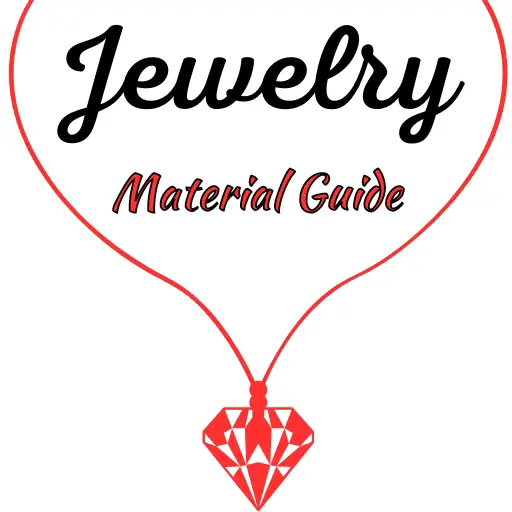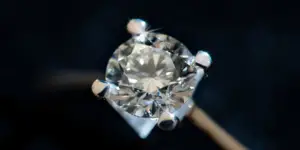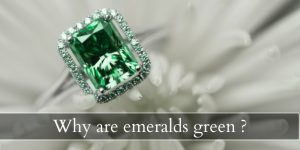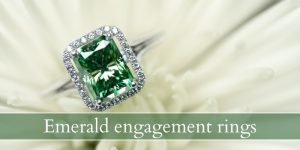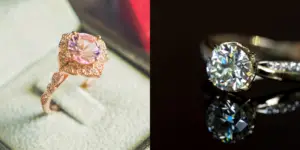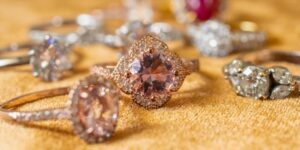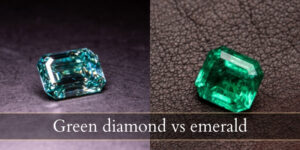Choosing your diamond is never easy, since you have so many options but also so many factors to take into account. Color is just one of them, and everything gets more complicated when you pair the diamond’s color with the metal for the ring. What diamond color works best for a yellow gold ring ? Will the diamond pick up the band color ? Does the setting style matter ? Can you put a halo on this kind of diamond ?
We’re taking a look at diamond color and why this or that color range would look better in yellow gold. Take a look.
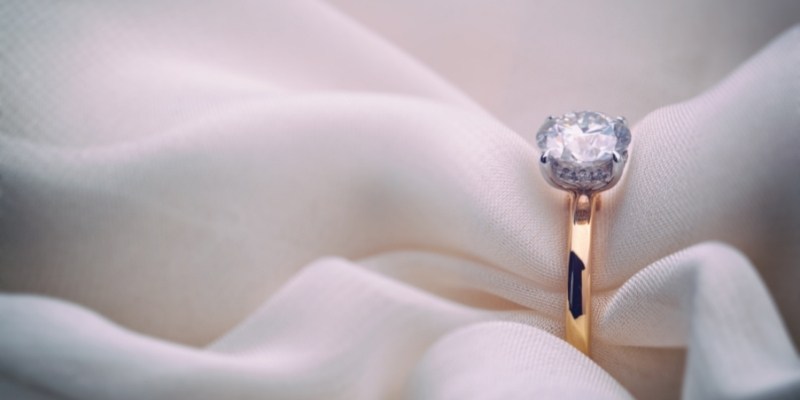
What color diamond is best for yellow gold ?
G-J diamonds work best in yellow gold, since their color will appear more white (colorless) in contrast to the strong gold color of the ring. D-F diamonds are also good but they will pick up the yellow in the gold setting and band, and look like a G-J diamond instead. You can also go as low as M color if you’re looking for a warmer hue in your diamond, or going for a vintage look.
The lower the color grade, the easier it is to notice the yellow tint, but there is a sweet spot that works very well with yellow gold. The most common color grading system is the GIA system:
- D-E-F are colorless
- G-H-I-J are near-colorless
- K-L-M are faint yellow
- N-O-P-Q-R are very light yellow
- S through Z are light yellow
Keep in mind that this grading system is highly subjective. No two jewelers will agree on the exact color (like a G vs an H, or an M vs an N) so your eyes could deceive you, your fiancee, and your friends. Which could come in handy if you’re trying to enhance the diamond’s color to appear more white instead of yellow. We’ll explain how to do that in a bit.
Read also: How To Pair Your Wedding Band And Engagement Ring
How to enhance a near-colorless diamond’s color
Your diamond doesn’t necessarily have to be colorless to appear white. It very much depends on the setting’s metal color, whether it has a halo or not, and what kind of cut your diamond has (brilliant or step-cut, and not all brilliant cuts are the same).
Overall it’s fairly easy to tweak what a diamond will look like, by at least one grade. And it’s also easier to make it look more yellow or keep that warm hue, if that is what you wish. Here’s how to make that diamond appear crisp and bright (and whiter).
Use a white metal setting for a near-colorless diamond
Your diamond will pick up its surrounding colors, such as your skin color and your ring metal color. For this reason you can use a white metal color to set the diamond in whichever way you like. Prong settings work best in this scenario because there is enough white metal under the diamond (on the pavilion) to impart color, but not much on the crown to contract a possibly yellow-looking diamond.
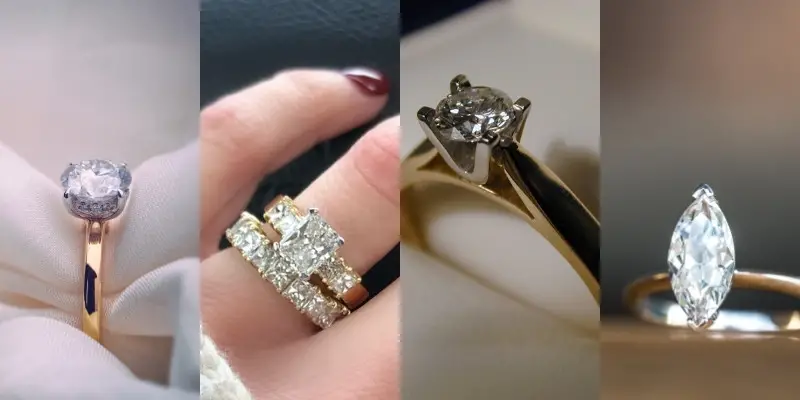
You’d think a bezel might work better because there’s more white metal surrounding the diamond, but if your diamond is too yellow it may just backfire and instead contrast the diamond. Proceed with caution if you’re trying to set an I color or lower in a white metal bezel.
Some people enjoy a warm hue in their diamond, and in this case a white metal setting is not necessary. In these cases the yellow or rose color from the metal will simply compliment your diamond’s color and the whole ring will look cohesive. In case you want your warm diamond to keep its look, be sure that any other diamonds are just as warm.
Do not set a tinted diamond in a diamond halo
A near-colorless or very light yellow diamond may appear more yellow in a halo because the diamonds will vary in hue a little bit, and you risk exposing the center diamonds to more white metal (prongs), making the yellow more noticeable than you’d like.
If you want your diamond ring to have more than one diamond, so not a solitaire, perhaps consider a three-stone ring and be very careful to choose 3 very similar looking diamonds.
If you really, really want a halo then perhaps a row of colored gemstones would work better. Any colored gemstone will do, as long as it is a color that you or your fiancee would like. This also works for pave bands or multi-stone rings, or cluster rings.
Or, if you’re willing to change things up a bit, you could make the center stone a gemstone (like a sapphire or ruby) and the surrounding halo a set of near-colorless diamonds.
Brilliant cuts hide color tint better than step cuts
Not all diamonds are cut the same, and it appears not all cuts work the same. When it comes to hiding color the brilliant cuts tend to work best, because they have much more sparkle and more facets than step cuts. On the other hand a step cut focuses the color in its mirroring facets, so the end result is a more intense color overall.
So if you’re on the lookout for the usual round brilliant, it will be quite forgiving and give you at least one whole grade leeway. Oval, marquise, and pear cuts also work great but they may concentrate the color near the tips, where the diamond is thinner.
Radiant cuts and princess cuts work almost as well as a round brilliant, and better than an oval/pear/marquise. That being said, all of them will give you a better color than an emerald cut or an Asscher.
If your heart is set on a step cut, your diamond is near-colorless, and you want to set it in yellow gold then perhaps one of the higher grades (like a G or H) would be better, along with a white metal 4 prong setting and definitely leave it a solitaire.
Lower grade color diamonds will save you money
A diamond’s color (or lack of color) is what makes it more or less expensive. The D-F color range is the most expensive because perfectly crisp, bright diamonds are the most desirable. This leaves the G-J range as the second most expensive, and it means the next range (K-M) is even more affordable. By how much ?
Let’s take a look at a few examples from the most well know online diamonds sellers. These are not our sponsors, we’re simply using their online catalog to analyze the price differences. We will look at a 1ct round brilliant, with Ideal cut and VVS1 clarity, on both sites. We think this is the most common and most reasonable expectation to have for most engagement diamonds, and we will look just at how the price varies when only the color range changes.
For a D color on JamesAllen the average price is $13,400, and on BlueNile $16,500.
For an E color on JamesAllen the average price is $11,600 and on BlueNile $14,800.
For an F color on JamesAllen the average price is $11,500 and on BlueNile $14,100.
For a G color on JamesAllen the average price is $9,700 and on BlueNile $12,000.
For an H color on JamesAllen the average price is $8,500 and on BlueNile $11,600.
For an I color on JamesAllen the average price is $6,800 and on BlueNile $9,200.
For a J color on JamesAllen the average price is $5,700 and on BlueNile $7,500.
For a K color on JamesAllen the average price is $4,600 and on BlueNile $5,400.
BlueNile does not carry diamond color grades lower than K. So we have JamesAllen with L color average price at $3,900 and the M color also for $3,900.
As you can seen the drop from a D to an E and F is significant, and so is the drop from a G to an H, and from an H to an I. Although realistically your eyes or your fiancee’s eyes won’t easily tell the difference between an I and a J. But there’s a noticeable price difference that could be put to use for a honeymoon, wedding preparations, extra embellishments on the ring, some very good quality wedding rings, etc. You known your own finances and where those extra thousands could go.

I’m the main author for jewelrymaterialguide.com. I started this site after we did tons of research before our wedding and noticed that there is information about rings, jewelry, and so on that is really hard to find on the internet.
